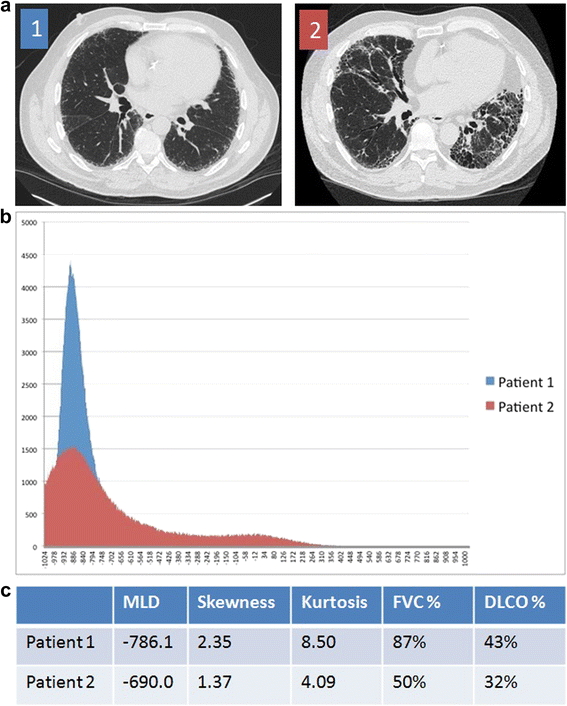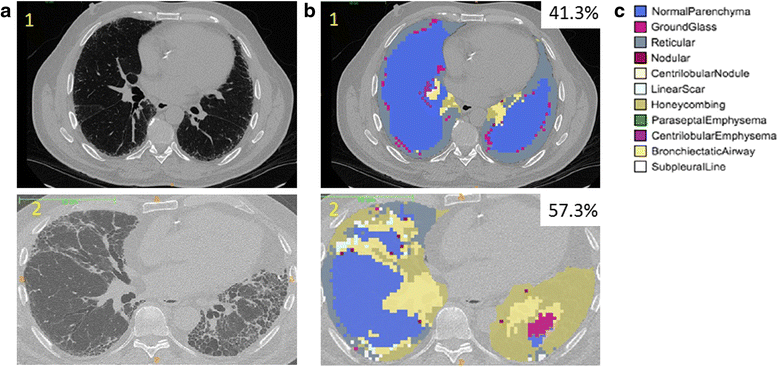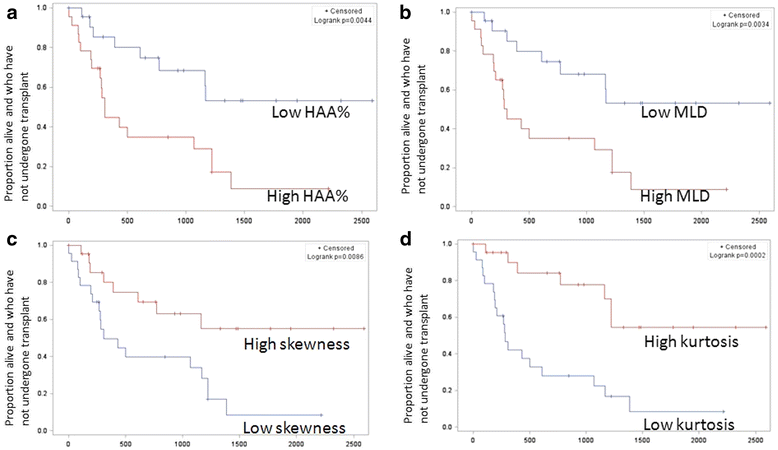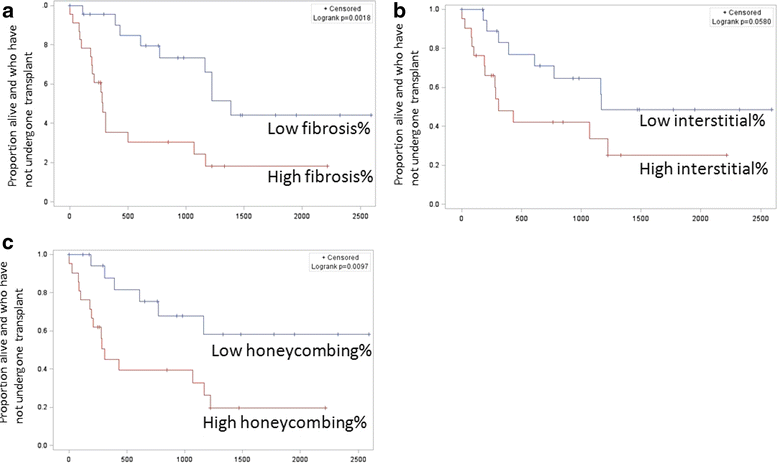Densitometric and local histogram based analysis of computed tomography images in patients with idiopathic pulmonary fibrosis
- PMID: 28264721
- PMCID: PMC5340000
- DOI: 10.1186/s12931-017-0527-8
Densitometric and local histogram based analysis of computed tomography images in patients with idiopathic pulmonary fibrosis
Abstract
Background: Prior studies of clinical prognostication in idiopathic pulmonary fibrosis (IPF) using computed tomography (CT) have often used subjective analyses or have evaluated quantitative measures in isolation. This study examined associations between both densitometric and local histogram based quantitative CT measurements with pulmonary function test (PFT) parameters and mortality. In addition, this study sought to compare risk prediction scores that incorporate quantitative CT measures with previously described systems.
Methods: Forty six patients with biopsy proven IPF were identified from a registry of patients with interstitial lung disease at Brigham and Women's Hospital in Boston, MA. CT scans for each subject were visually scored using a previously published method. After a semi-automated method was used to segment the lungs from the surrounding tissue, densitometric measurements including the percent high attenuating area, mean lung density, skewness and kurtosis were made for the entirety of each patient's lungs. A separate, automated tool was used to detect and quantify the percent of lung occupied by interstitial lung features. These analyses were used to create clinical and quantitative CT based risk prediction scores, and the performance of these was compared to the performance of clinical and visual analysis based methods.
Results: All of the densitometric measures were correlated with forced vital capacity and diffusing capacity, as were the total amount of interstitial change and the percentage of interstitial change that was honeycombing measured using the local histogram method. Higher percent high attenuating area, higher mean lung density, lower skewness, lower kurtosis and a higher percentage of honeycombing were associated with worse transplant free survival. The quantitative CT based risk prediction scores performed similarly to the clinical and visual analysis based methods.
Conclusions: Both densitometric and feature based quantitative CT measures correlate with pulmonary function test measures and are associated with transplant free survival. These objective measures may be useful for identifying high risk patients and monitoring disease progression. Further work will be needed to validate these measures and the quantitative imaging based risk prediction scores in other cohorts.
Keywords: Computed tomography; Idiopathic pulmonary fibrosis; Imaging; Interstitial lung disease; Mortality; Quantitative.
Figures





References
-
- Raghu G, Collard HR, Egan JJ, Martinez FJ, Behr J, Brown KK, Colby TV, Cordier JF, Flaherty KR, Lasky JA, et al. An official ATS/ERS/JRS/ALAT statement: idiopathic pulmonary fibrosis: evidence-based guidelines for diagnosis and management. Am J Respir Crit Care Med. 2011;183:788–824. doi: 10.1164/rccm.2009-040GL. - DOI - PMC - PubMed
Publication types
MeSH terms
Grants and funding
LinkOut - more resources
Full Text Sources
Other Literature Sources

